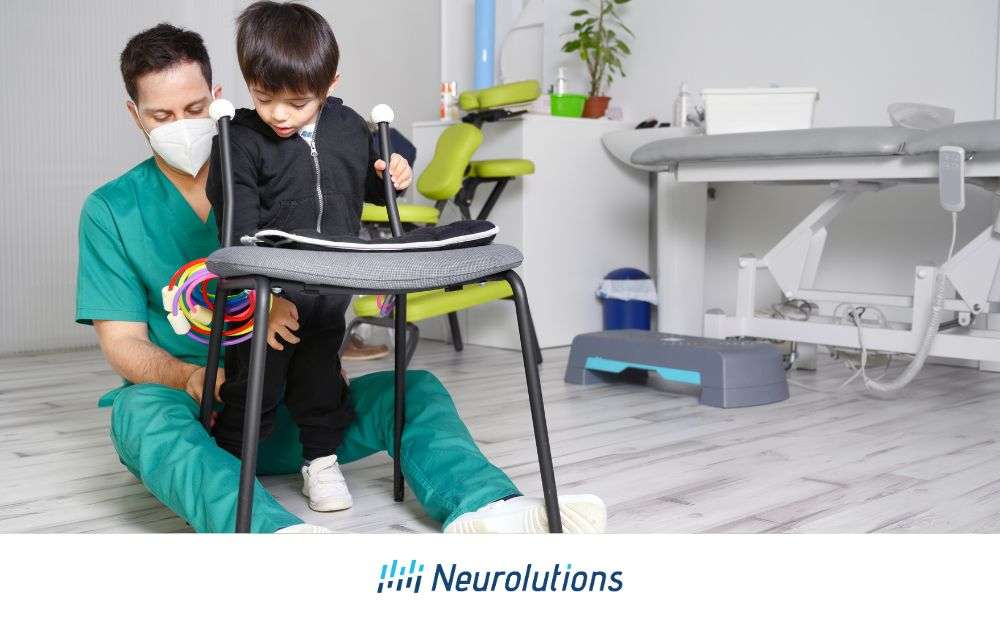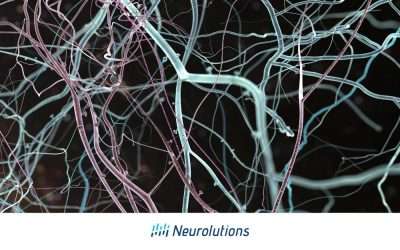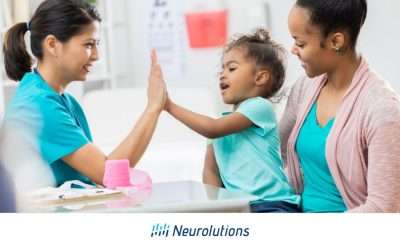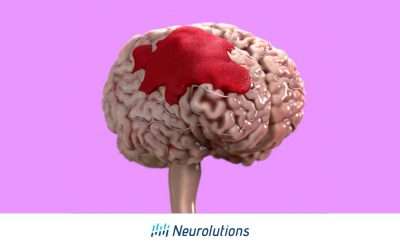What is Spastic Diplegia?
Spastic diplegia, a subtype of Cerebral Palsy (CP), primarily affects leg movement, causing stiffness and jerky movements due to brain damage from various causes.
Spastic diplegia is a type of Cerebral palsy (CP). CP is a condition resulting from brain damage caused by various factors such as genetics, birth-related issues, or injuries in early infancy. It is the leading cause of disability in childhood, impacting around 3.6 of every 1,000 children (1). CP is usually identified in newborns or young children. However, because of neuroplasticity, the condition typically doesn’t worsen over time. Neuroplasticity is the brain’s ability to adapt and create new connections, preventing CP from progressing.
As a subtype of CP, spastic diplegia, mainly causes stiffness and jerky movements in the legs, which can make walking and other movements difficult (2, 3). A child with spastic diplegia might also have other types of CP, each with distinct characteristics:
- Spastic hemiplegia – characterized by spasticity and movement difficulties on one side of the body. Spasticity is when a muscle contracts involuntarily, which causes tightness.
- Spastic quadriplegia – involving spasticity and movement difficulties in all four limbs.
- Dyskinetic/hyperkinetic (choreoathetoid) – marked by excessive, involuntary movements including quick, repeated muscle jerks and slow, twisting motions.
- Dystonic – characterized by involuntary and long-lasting muscle contractions that cause repeated twisting movements.
- Ataxic – characterized by unsteadiness, lack of coordination, and weak “floppy” muscle tone.
Most cases of CP (between 85-90%) result from abnormalities occurring before birth, with up to 30% attributed to genetic errors (5, 6). Regardless of the cause, people living with CP face challenges in their lives due to the consequential motor skill impairments.
Causes and Risk Factors of Spastic Diplegia
The main cause of spastic diplegia and CP is abnormal brain development often due to genetic factors, birth complications, or early injuries, with common risk factors including low birthweight and premature birth.
The primary cause of CP and spastic diplegia is an abnormal development of the brain’s “white matter” before, during, or soon after birth. In addition to genetic factors, CP can also be caused by a lack of blood flow or oxygen to the brain, which might happen if the umbilical cord gets squeezed during birth. Around 10% of CP is caused outside of the womb, often associated with newborn head trauma (7). The most common risk factors associated with CP and spastic diplegia are (8):
- Low birthweight
- Premature birth
- Multiple births (such as triplets)
- Birth complications
- Jaundice and kernicterus
- Infection in the mother during pregnancy or a medical disorder such as hypothyroidism
Signs of Cerebral Palsy in Early Childhood
Symptoms of CP and spastic diplegia appear in infancy, presenting challenges in movement, speech, and developmental milestones.
Symptoms of CP and spastic diplegia appear in early infancy and continue into the preschool years. Challenges related to CP encompass movement and coordination, speech and eating, and deviations from expected growth and development patterns. An early indicator of CP are often delays in achieving age-appropriate motor skill milestones. For example, infants with spastic diplegia may be unable to sit up or crawl (9).
Common Questions about Spastic Diplegia
Spastic diplegia is a prevalent form of CP, comprising a significant portion of cases, and but generally does not progress to more severe forms like tetraplegia due to brain neuroplasticity.
The following are common questions about Spastic Diplegia:
- Is spastic diplegia rare?
CP is relatively rare with an estimated 760,000 people in the US living with the condition (10). Spastic diplegia is seen in a substantial portion, accounting for 77% of all CP cases (11).
- Can spastic diplegia become tetraplegia?
Tetraplegia (also called quadriplegia) occurs in some people with cerebral palsy. However, a child with spastic diplegia is not expected to progress to tetraplegia.
- What does spastic diplegia have to do with Cerebral Palsy?
Spastic diplegia is a subtype of cerebral palsy; it is the most common subtype of cerebral palsy.
- Does mild spastic diplegia ever improve?
Yes. The brain’s ability to adapt and rewire neural connections, known as neuroplasticity, could enable an infant diagnosed with mild spastic diplegia to show improvement as they grow older.
Symptoms and Signs of Spastic Diplegia
Children with spastic diplegia exhibit unique gait patterns and muscle tightness, leading to developmental issues and impairments in mobility and even upper extremity function.
Spastic diplegia manifests primarily through muscle movement challenges that is most apparent in walking patterns, also known as “gait” patterns. Children with spastic diplegia often exhibit gait abnormalities such as “scissor gait” and toe-walking. “Scissor gait” is a way of walking where the legs bend a little at the hips and knees, making the legs move in a crossing pattern like scissors. This type of disordered gait is caused by tightness in the hip muscles, and can lead to the development associated problems:
- Developmental issues associated with the growth of the lower extremity as a result of uneven muscle tension
- Poor balance and intermittent falling
- Lower extremity pain stemming from persistent muscular tension and joint stress
- Sores resulting from frequent rubbing of the knees when walking
Additionally tightness in the lower extremity muscles can impact and cause impairments in the upper extremity muscles. For example, a person walking with the “scissor gait” for an extended period of time can make their arms bend at an angle while walking, placing an additional strain on the shoulder and arm muscles.
Listed below are other gait disorders found in people living with CP (12):
- Equinus foot – This is characterized by an involuntary bending of the ankle at an upwards angle while walking, leading the foot to an abnormal position relative to the shin bone.
- Jump gait – This manifests as a disordered bending of the hip and knee, usually accompanied by the equinus foot position; this is evident when walking as the knee bends extensively.
- Crouch gait – This is marked by the knee bending excessively while walking, but straightening when the foot is on the ground mid-stance (13).
- Dropped foot – it results from an inability to lift the foot upward because their ankle muscles are weak (14).
Implementing early interventions such as physical therapy, orthotics, and assistive devices is crucial in preventing CP-related gait disorders from further impairing walking ability during development.
Additionally, spastic diplegia can present difficulties beyond mobility issues. Individuals may experience challenges with speaking, swallowing, delays in achieving motor skill milestones, vision deficits, and seizures (15). While most people with CP have mild-to-moderate impairments in these areas, others may experience more severe limitations that significantly impact their daily lives.
Complications of Cerebral Palsy in Adulthood
CP can lead to premature aging symptoms like osteoporosis and muscle pain, impacting quality of life and mental health.
CP can cause issues that make people feel older than their age, such as bone weakness and pain more often associated with senior-aged adults (16). Young adults with CP may even be diagnosed with osteoporosis, a condition where bones become fragile (17). Additionally, problems with walking and upper extremity movements in childhood can lead to long-term issues such as permanent contractures and skeletal deformities, such as scoliosis, in adulthood (18). Muscle pain that comes with CP can also make someone more likely to feel depressed and overall lower their quality of life.
Spastic Diplegia and Stroke
Stroke risk is elevated in individuals with CP, complicating recovery and management of motor skills in adulthood.
Having a stroke in the womb, shortly after birth, or during early childhood increases the risk of developing CP. Adults with CP are also more likely to have a stroke compared to adults without CP (19). Another challenge for adults with CP is that their brain injury from CP can make it harder to recover after a stroke in adulthood, especially when it comes to regaining lost motor skills needed for everyday tasks.
For stroke survivors, the brain’s neuroplasticity helps in recovering lost motor skills. This can often happen through participation in physical, occupational, and cognitive therapy, as all three efforts promote neuroplasticity. For adults with CP, this process might be slower, making it harder to regain muscle movements and motor skills needed for daily activities.
Diagnosis and Evaluation of Spastic Diplegia
Diagnosis of CP involves various brain imaging and physical exams to assess muscle movement and identify specific CP subtypes.
To diagnose CP and to rule out other possible causes for the symptoms, doctors use brain imaging tests and physical exams. They might do genetic testing and metabolic testing as well. The brain tests include (20):
- Computed Tomography (CT) scan
- Magnetic Resonance Imaging (MRI) scan
- Electroencephalogram (EEG)
These tests help pinpoint the injured areas of the brain and link them to specific CP subtypes. An EEG is very helpful for tracking seizure activity, for it can recognize the presence and severity of epilepsy. This is important to measure, because as many as 45% of people with CP also experience epilepsy (21).
Evaluation of spastic diplegia includes numerous assessments of muscle movement and the development of motor skills so that interventions to improve motor skills can be initiated as early as possible and prevent permanent muscle and bone damage later in life. Early intervention increases the chance that a child with spastic diplegia can acquire age-appropriate motor skills.
Treatment Approaches for Managing Spastic Diplegia
Effective management of spastic diplegia includes physical therapy, orthotic or assistive devices, medications, and surgery to improve mobility and prevent further complications.
There are five categories of treatment approaches for (CP, including for those with spastic diplegia (22):
- Physical therapy (PT), occupational therapy (OT) and other rehabilitation therapies
- Orthotic devices (such as leg braces, splints, and casts)
- Assistive devices (including both manual and technological assistive devices)
- Medications
- Surgery
Beginning PT as soon as a child is diagnosed with CP can prevent delays in motor skill development that typically happen in early childhood (23). Learning to go from crawling to standing usually occurs before walking; thus, during PT sessions, helping a child with CP practice standing can pave the way for learning to walk. Likewise, PT exercises can also prevent permanent skeletal deformities and contractures from developing, giving the child a better chance at improving motor skills.
Occupational therapists (OTs) will work with their patients to improve their physical, cognitive, and social abilities, as well as fine motor skills and posture. This type of therapy can be helpful in boosting muscle and joint coordination, which can make daily tasks like eating, brushing teeth, and bathing easier. Ultimately, OT addresses difficulties with processing sensory information and optimizes upper body function to aid in mastering basic activities of daily living (24).
For instance, a child with spastic diplegia who finds it hard to use their hand and thumb might improve muscle flexibility and strength in those areas through physical therapy. This progress could enable them to hold a cup and drink on their own. In addition, therapy can improve swallowing, making drinking and eating easier.
Other treatment options may include specific medications and the use of assistive or orthotic devices. Doctors may prescribe medications to reduce muscle spasticity and increase the effectiveness of PT exercises. Orthotic devices are often used to help children and adults with CP to walk without hurting themselves or feeling more pain. Rolling walkers are an example of an assistive device that can be used with proper training to help someone with severe lower limb spasticity to walk safely and prevent falls.
Surgical Interventions for Spastic Diplegia
Surgical options like tendon release and selective dorsal rhizotomy can alleviate stiffness and improve motion in patients with spastic diplegia.
In some cases of spastic diplegia, surgery may be necessary to stretch stiff muscles or cut nerves to help with spastic movements (25). For children with spastic diplegia, tendon release surgery has been shown to reduce stiffness and boost range of motion in affected joints (26). Another option, Selective Dorsal Rhizotomy (SDR), is a minimally-invasive surgery on the spine that can reduce leg stiffness and improve walking ability (27).
The main goal of surgery for children and adults with CP is to maintain or improve their ability to do daily activities, prevent permanent deformities, and foster an overall better quality of life.
Lifestyle Tips and Supportive Care for Individuals with Spastic Diplegia
Supportive care focuses on enhancing independence through assistive devices and rehabilitation therapies, fostering participation in daily activities and community life.
Most people with CP have normal cognitive and mental abilities. Therefore, it’s crucial for them to accomplish tasks such as feeding themselves and moving without assistance. For those who are unable to walk safely or walk at all, using assistive devices such as rolling walkers or wheelchairs is key to performing everyday tasks.
For a child with CP, promoting physical capacities, learning, and social interactivity are vital to their overall development. The use of mechanical and or technological assistive devices can help them be more independent and perform activities that would otherwise be difficult or impossible. For instance, a child who struggles with speaking might utilize a device that speaks on their behalf. Additional devices could assist individuals with CP in feeding themselves if they have difficulty moving their hands effectively.
Even in severe cases of CP, independence in everyday tasks can be encouraged through involvement with rehab therapies, braces and splints, assistive devices, and support from caregivers. When factoring in all these elements, people with CP can be active members of their communities.
Conclusion
Only 22% of people with CP have spastic diplegia as their sole subtype, and severe cases of CP are far less common than mild ones (28). Spastic diplegia mostly affects leg movements, often causing difficulties with walking. However, other types of CP can affect upper arm, hand, and finger movements impacting self-care and other motor skills.
Treatment for CP usually involves five main approaches: rehab therapies, orthotic devices, assistive devices, medications, and surgery. Since every person with CP is unique, their treatment plan needs to be tailored to their specific needs.
CP is a neurological disorder that affects body movement, begins in infancy or early childhood, and typically does not worsen over time due to neuroplasticity. Accurate diagnosis and treatment can determine whether someone can maintain independence and progress through developmental stages as normally as possible. Early engagement in a rehab program, including physical therapy, is essential. Additionally, the use of mechanical and/or technological assistive devices can enhance independence, even in severe cases of CP.
References:
-
- Birth Injury Help Center. Cerebral Palsy Statistics. Webpage: https://www.birthinjuryhelpcenter.org/cerebral-palsy-statistics.html
- National Institute of Neurological Disorders and Stroke (NINDS). Cerebral Palsy. Webpage: https://www.ninds.nih.gov/health-information/disorders/cerebral-palsy
- National Institute of Neurological Disorders and Stroke (NINDS). Cerebral Palsy. Webpage: https://www.ninds.nih.gov/health-information/disorders/cerebral-palsy
- Hallman-Cooper JL, and Rocha Cabrero F. (Last update: October 10, 2022). Cerebral Palsy. In: StatPearls [Internet]. StatPearls Publishing: Treasure Island, FL. Webpage: https://www.ncbi.nlm.nih.gov/books/NBK538147/
- Centers for Disease Control (CDC). Causes and Risk Factors of Cerebral Palsy. Webpage: https://www.cdc.gov/ncbddd/cp/causes.html#:~:text=CP%20related%20to%20abnormal%20development,%25%E2%80%9390%25)%20is%20congenital.
- National Institutes of Health (NIH). (September 28, 2020). News Releases – About 14% of cerebral palsy cases may be tied to brain wiring genes. Webpage: https://www.nih.gov/news-events/news-releases/about-14-cerebral-palsy-cases-may-be-tied-brain-wiring-genes
- CPFamilyNetwork. Blog. Are You Born with Cerebral Palsy? Webpage: https://cpfamilynetwork.org/resources/blog/are-you-born-with-cerebral-palsy/
- Centers for Disease Control (CDC). Causes and Risk Factors of Cerebral Palsy. Webpage: https://www.cdc.gov/ncbddd/cp/causes.html#:~:text=CP%20related%20to%20abnormal%20development,%25%E2%80%9390%25)%20is%20congenital.
- Mayo Clinic. Cerebral Palsy. Webpage: https://www.mayoclinic.org/diseases-conditions/cerebral-palsy/symptoms-causes/syc-20353999
- My Cerebral Palsy Child. Facts and Statistics. Webpage: https://www.mycerebralpalsychild.org/facts-and-statistics/
- Birth Injury Help Center. Cerebral Palsy Statistics. Webpage: https://www.birthinjuryhelpcenter.org/cerebral-palsy-statistics.html
- Tugui RD, and Antonescu D. (2013). Cerebral palsy gait, clinical importance. Maedica (Bucur) 8(4): 388-393. Webpage: https://www.ncbi.nlm.nih.gov/pmc/articles/PMC3968479/
- Cerebral Palsy Foundation. Why Gait Patterns Matter? Learn More About Bilateral Gait/Diplegia. Webpage: https://cpresource.org/topic/gait-development-movement-analysis/why-gait-patterns-matter-learn-more-about-bilateral
- Tugui RD, and Antonescu D. (2013). Cerebral palsy gait, clinical importance. Maedica (Bucur) 8(4): 388-393. Webpage: https://www.ncbi.nlm.nih.gov/pmc/articles/PMC3968479/
- Mayo Clinic. Cerebral Palsy. Webpage: https://www.mayoclinic.org/diseases-conditions/cerebral-palsy/symptoms-causes/syc-20353999
- Haak P, Lenski M, Hidecker MJ, et al. (2009). Cerebral palsy and aging. Developmental Medicine and Child Neurology 51 Suppl 4(0 4): 16-23. Webpage: https://www.ncbi.nlm.nih.gov/pmc/articles/PMC4183123/
- Haak P, Lenski M, Hidecker MJ, et al. (2009). Cerebral palsy and aging. Developmental Medicine and Child Neurology 51 Suppl 4(0 4): 16-23. Webpage: https://www.ncbi.nlm.nih.gov/pmc/articles/PMC4183123/
- Hasler C, Brunner R, Grundshtein A, et al. (2020). Spine deformities in patients with cerebral palsy; the role of the pelvis. Journal of Children’s Orthopaedics 14(1): 9-16. Webpage: https://journals.sagepub.com/doi/full/10.1302/1863-2548.14.190141
- Smith SE, Gannotti M, Hurvitz EA, et al. (2021). Adults with Cerebral Palsy Require Ongoing Neurologic Care: A Systematic Review. Annals of Neurology 89(5): 860-871. Webpage: https://onlinelibrary.wiley.com/doi/10.1002/ana.26040
- Centers for Disease Control (CDC). Screening and Diagnosis of Cerebral Palsy. Webpage: https://www.cdc.gov/ncbddd/cp/diagnosis.html#:~:text=Specialists%20might%20suggest%20brain%20imaging,or%20second%20year%20after%20birth.
- Cerebral Palsy Research Network. Cerebral Palsy & Epilepsy. Webpage: https://cprn.org/cerebral-palsy-epilepsy/
- National Institutes of Health (NIH), Eunice Kennedy Shriver National Institute of Child Health and Human Development. What are common treatments for cerebral palsy? Webpage: https://www.nichd.nih.gov/health/topics/cerebral-palsy/conditioninfo/treatments
- Paul S, Nahar A, Bhagawati M, et al. (2022). A Review on Recent Advances of Cerebral Palsy. Oxidative Medicine and Cellular Longevity 2022: 2622310. Webpage: https://www.ncbi.nlm.nih.gov/pmc/articles/PMC9356840/
- Cerebral Palsy Guide (2023). Occupational Therapy for Cerebral Palsy – Improve Daily Skills. Webpage: https://www.cerebralpalsyguide.com/treatment/occupational-therapy/
- National Institutes of Health (NIH), Eunice Kennedy Shriver National Institute of Child Health and Human Development. What are common treatments for cerebral palsy? Webpage: https://www.nichd.nih.gov/health/topics/cerebral-palsy/conditioninfo/treatments
- Kuo CC, Huang HP, Wang TM, et al. (2021). Tendon release reduced joint stiffness with unaltered leg stiffness during gait in spastic diplegic cerebral palsy. PLoS One 16(1): e0245616. Webpage: https://www.ncbi.nlm.nih.gov/pmc/articles/PMC7810324/
- Boston Children’s Hospital [Boston, MA]. Selective Dorsal Rhizotomy. What is selective dorsal rhizotomy? Webpage: https://www.childrenshospital.org/treatments/selective-dorsal-rhizotomy#:~:text=Selective%20dorsal%20rhizotomy%20(SDR)%20is,Botox%20injections%2C%20have%20stopped%20working.
- Kuo CC, Huang HP, Wang TM, et al. (2021). Tendon release reduced joint stiffness with unaltered leg stiffness during gait in spastic diplegic cerebral palsy. PLoS One 16(1): e0245616. Webpage: https://www.ncbi.nlm.nih.gov/pmc/articles/PMC7810324/




